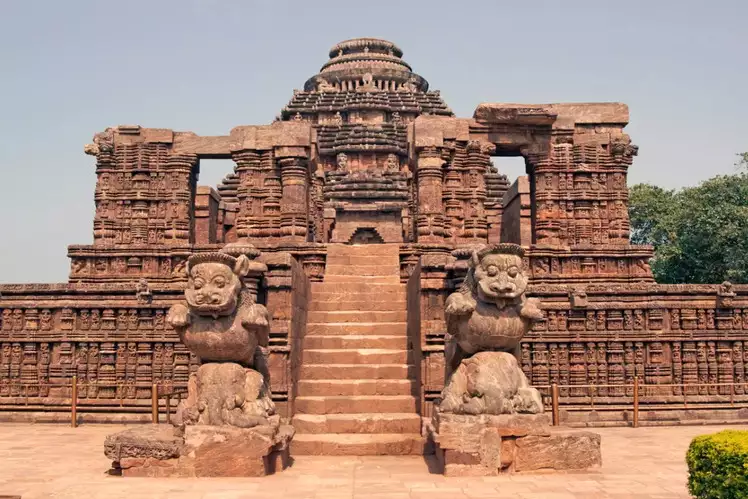Understanding the Architectural Marvels of Ancient Indian Temples

India, with its rich cultural and religious history, is home to some of the most exquisite and awe-inspiring temples in the world. These structures not only serve as places of worship but also represent the grandeur of ancient Indian architecture, combining artistic brilliance, engineering marvels, and spiritual significance. From intricately carved stone temples to grand, awe-inspiring structures, the architectural wonders of India offer a glimpse into the country’s glorious past.
The architectural styles of ancient Indian temples have evolved over centuries, with diverse regional variations that reflect the local culture, beliefs, and geography. However, despite their regional differences, all these temples share a common purpose: to serve as a gateway to the divine, both in the physical and spiritual realms.
Vastu Shastra and Temple Architecture
Central to the design and construction of temples in ancient India is Vastu Shastra, an ancient system of architecture that governs the layout and dimensions of structures to ensure harmony with cosmic energy. According to Vastu principles, the temple should be aligned with the cardinal directions, and its sanctum (the innermost chamber where the idol is placed) should be positioned in a specific way to harness spiritual energy.
The temple design also includes numerous sacred geometries, with each element, from the height of the spires to the number of steps leading to the entrance, having spiritual significance. These designs were not just aesthetic but were believed to bring balance and harmony between the divine, nature, and human beings.
Architectural Styles of Ancient Indian Temples
Indian temples, over time, have evolved in terms of design and structure, giving rise to several distinct architectural styles. These styles reflect the cultural, religious, and regional diversity of India.
- Nagara Style (North Indian Temples): The Nagara style of architecture is prevalent in the temples of northern India. The defining feature of this style is the Shikhara (mountain-like spire), which rises majestically above the sanctum. The temples are often made from stone, and the walls are adorned with intricate carvings depicting gods, goddesses, and mythological tales.
One of the finest examples of the Nagara style is the Kashi Vishwanath Temple in Varanasi, which is dedicated to Lord Shiva. The temple’s towering spire, adorned with sculptures, and its overall design represent the fusion of spirituality and architectural genius.
- Dravidian Style (South Indian Temples): The Dravidian style, which is found in the temples of southern India, is characterized by monumental structures and large, towering Gopurams (gateway towers). These temples are known for their grand entrances, with multiple levels of intricate carvings depicting scenes from Hindu mythology. The Gopurams are often covered in brightly colored sculptures of deities, animals, and mythological figures.
The Brihadeeswarar Temple in Thanjavur is one of the finest examples of Dravidian architecture. This temple, dedicated to Lord Shiva, boasts a massive central dome, an enormous statue of the deity, and stunning stone carvings. The temple is a UNESCO World Heritage site and exemplifies the grandeur of the Dravidian style.
- Vesara Style (Central Indian Temples): The Vesara style is a blend of the Nagara and Dravidian architectural styles, and it emerged in the Deccan region. It combines the tower-like structure of the Nagara style with the expansive halls and intricate carvings typical of the Dravidian style.
The Chennakesava Temple at Somanathapura is a prime example of Vesara architecture, with its intricately designed pillars, sculptured friezes, and multiple Shikharas. This style is characterized by a balanced, symmetrical design, reflecting harmony between the sacred and the earthly.
- Kalinga Style (Orissa Temples): The Kalinga style of architecture, mostly seen in the temples of Orissa, is known for its distinctive Rekha Deul (tower-like spires) and intricate stone carvings. The temples often have jagged, angular roofs and are adorned with large sculptures of gods, goddesses, and animals.
The Konark Sun Temple, one of India’s most famous temples, is a perfect example of the Kalinga style. The temple, which is designed in the shape of a chariot, features elaborate stone carvings and is dedicated to the Sun God. It is also a UNESCO World Heritage site and is admired for its architectural and artistic brilliance.
Sacred Sculptures and Carvings
One of the most fascinating aspects of ancient Indian temples is the richness of their sculptures and carvings. Every surface of the temple, from its walls to pillars, tells a story through art. The sculptures often depict gods, goddesses, celestial beings, and scenes from Hindu mythology. They are not mere decorative elements but are considered vital to the temple’s spiritual function, as they are believed to house divine energy.
The Meenakshi Temple in Madurai, for example, is famous for its stunning sculptures of gods, goddesses, and mythological characters, all intricately carved in stone. The temple also showcases some of the finest examples of Dravidian architecture, with its many Gopurams and vast courtyards.
The Role of Temples in Indian Society
Beyond their religious significance, temples in ancient India served as important centers of social, cultural, and economic life. They were places where people gathered not only for prayers but also for education, art, and community events. Many temples had vast libraries, where scholars from all over the country would meet to discuss philosophy, religion, and science.
Temples also acted as patrons of the arts, commissioning works of sculpture, painting, and music. The elaborate temple rituals, festivals, and dances became an integral part of cultural expressions in India. Temples were not just architectural marvels but also symbols of the spiritual and cultural vibrancy of ancient India.
Preserving the Legacy of Indian Temples
The preservation of these architectural wonders is essential to maintaining India’s cultural heritage. Over the centuries, many ancient temples have faced natural disasters, invasions, and neglect. However, efforts to restore and protect these monuments are ongoing. The Archaeological Survey of India (ASI) and several other organizations are dedicated to the preservation of these temples, ensuring that future generations can experience and learn from their beauty and significance.
Conclusion
Ancient Indian temples are architectural masterpieces that reflect the brilliance and spiritual depth of India’s cultural and religious traditions. Their intricate designs, monumental structures, and symbolic artistry not only serve as places of worship but also as living testaments to India’s architectural prowess and its deep connection to the divine.
From the towering Gopurams of South India to the intricate carvings of North and Central India, these temples tell the story of a civilization that valued harmony, beauty, and spirituality. As we continue to appreciate and preserve these wonders, we ensure that the architectural marvels of ancient India remain an enduring part of our collective heritage.










